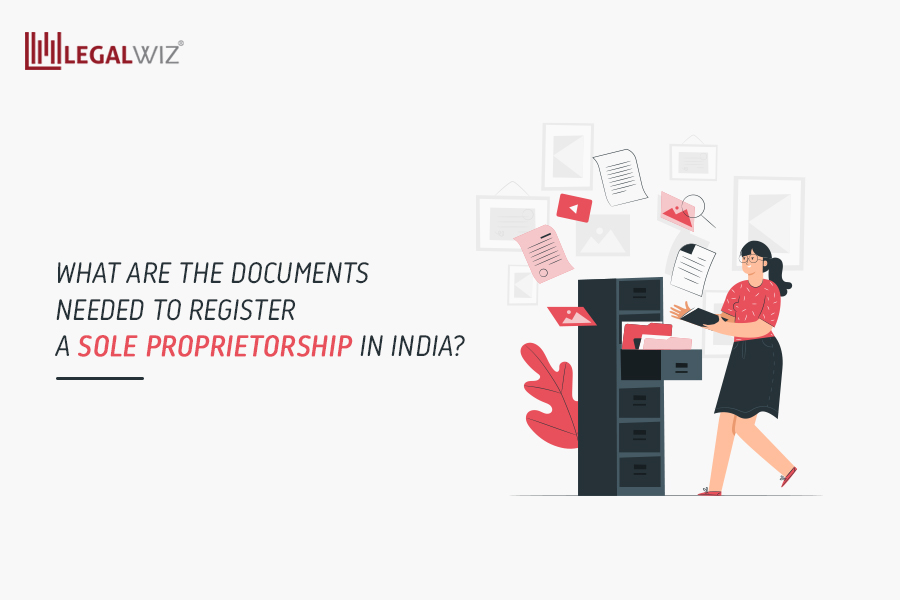Defining sole proprietorship
A sole proprietorship is one of the most accessible forms of business structure that can be carried out in India since any particular law does not govern it. Under the sole proprietorship structure, the compliances stay at the minimum, which can be easily fulfilled. Registration of the sole proprietorship is simple and easy. If you want a business with limited liability, you should go with the partnership as a business form.
Partnership firm registration in India can be done online with required documents under the partnership act, 1932. To put it simply, a sole proprietorship means a business that one person can carry on. All the decision making and management powers rest in the hands of one person. To begin the registration process of the sole proprietorship, one has to furnish the following documents compulsorily.
– PAN card.
– Aadhar card.
– Bank account.
– Registered office proof.
Even though a sole proprietorship does not need any particular registration, the person who wants to start a business as a sole proprietor is advised to opt for registration of sole proprietorship to smoothly and efficiently run his/her business functions. Few registrations that are recommended include the following;
– Registration as SME (small and medium-sized enterprises).
– Shop and establishment act license.
– GST (goods and services tax) registration.
Now, let’s go into the details of the documents necessary to register a sole proprietorship in India.
– Aadhar card.
Aadhar card number is now highly requisite while applying for any registration in India. Additionally, ITR (income tax return) can only be submitted if the person has already attached his/her PAN card with an Aadhar card. You can take assistance from your nearest E-Mitra or Aadhar Seva Kendra if you have not registered yourself under the Aadhar regime or do not have your Aadhar card number. Once you apply for an Aadhar card, after the verification has been done in a few days, you would receive the hard copy of the same at your registered address. It usually takes around 15-20 days to reach.
– PAN card.
No one can submit their ITR (income tax return) until they have a PAN card. Hence, if you do not have a PAN card, you are advised to apply it on the earliest basis. The process of getting a PAN card can be done online by visiting the official website, and it costs around Rs. 110. You are required to furnish a few documents, such as ID proof (identity proof), a scanned photograph, and your address proof. The form can be filed online by verifying it via Aadhar e-KYC.
Once the application is submitted, it would be inspected by the NSDL for verification, and if it finds the mentioned information correct, it will grant the PAN number within a week or so. A hard copy of the PAN card would also be delivered to your registered address within 14-20 days.
– Bank account.
After you have your Aadhar card and PAN card, you can go to any bank for creating an account with the mentioned proofs. Other than PAN card and Aadhar card, you will have to carry ID proof (identity proof) and address proof of yours. You would require to present a GST registration document to bank officials while opening a current account in the bank.
– Registered office proof.
For rental property – you will have to submit a rent agreement and NOC from a landlord.
For self-possessed property – you are required to submit an electricity bill or any other suitable address proof.
Few registrations are needed for a sole proprietorship.
Along with the documents mentioned above, there are few registrations that you are needed to get to start your business under the sole proprietorship.
– Registering as SME.
You can get registered yourself as a small and medium enterprise under the MSME act. This application can be submitted electronically. Though it is not mandatory to register as an SME, it is crucial to obtain benefits from it, especially while borrowing a loan for the business from the bank. The government has released some SMEs’ schemes where loans are offered at the concessional rate of interest.
– Shop and establishment license.
This license is not compulsory at all places, but it is necessary to get one as per the local laws. The municipal corporation grants it. It is granted based on the number of employees you have in the business.
– GST registration.
You can get yourself registered under the GST if your annual turnover exceeds Rs. 20 Lacs. This stays the same even if you are a sole proprietor or opt for partnership firm registration online. This is also applicable for online businesses such as selling via Flipkart and Amazon, you must obtain a GST number. GST registration process requires the following documents;
– Proprietor’s PAN card, Aadhar Card, and Photo.
– Business place’s proof (rent agreement or electricity bill).
– Bank statement copy (first page to verify the bank account number, IFSC code, and address).
The process of GST registration is straightforward and easy that can be done through the GST portal. Generally, the GST number is received within a few days of applying.


 Home
Home










